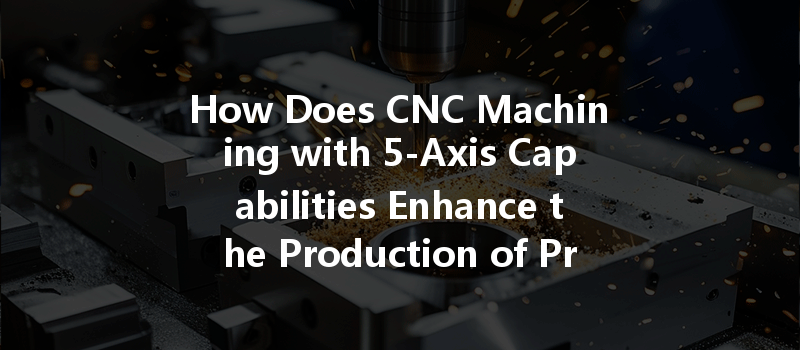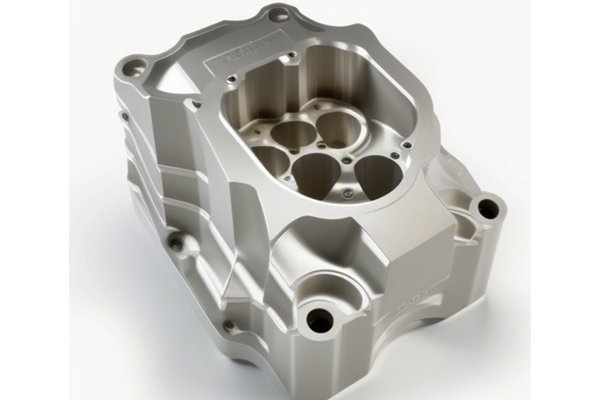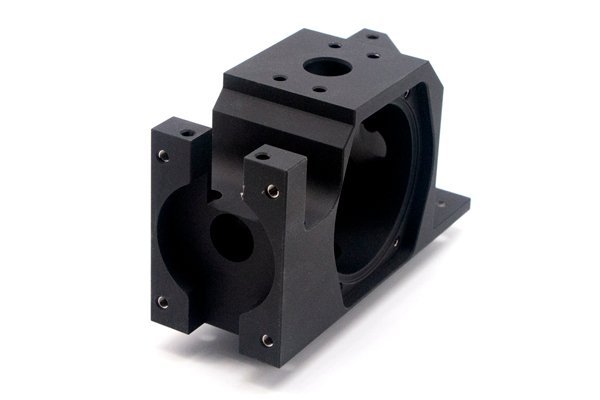Did you know that the global CNC machining market is projected to reach $100 billion by 2025, growing rapidly at a compound annual growth rate (CAGR) of 6%? This exponential growth is primarily driven by advancements in technologies such as 5-axis CNC machining, which has revolutionized the manufacturing landscape. If you’re in the manufacturing sector and haven’t yet explored the capabilities of 5-axis CNC machining, this blog will detail its advantages and applications, providing insight into why this technology is critical for producing precision parts.
to CNC Machining
Understanding CNC Machining
CNC (Computer Numerical Control) machining refers to the automated process of operating machine tools via pre-programmed computer software, allowing for highly accurate and repeatable production. It encompasses a variety of machining processes, including milling, turning, drilling, and grinding. The advancement of CNC technology has led to significant improvements in the efficiency and accuracy of component manufacturing, making it an essential component of modern production.
The Evolution of CNC Machining
While traditional CNC machines operated on 2 or 3 axes, the introduction of 5-axis CNC machines has changed the game. Unlike their predecessors, 5-axis machines can move the tool or part along five different axes simultaneously. This allows for unprecedented flexibility in design and manufacturing, particularly for complex geometries that would be impossible to achieve with older technologies.
The Mechanics of 5-Axis CNC Machining
What Constitutes 5-Axis CNC Machining?
5-axis CNC machining consists of three linear axes (X, Y, and Z) and two rotational axes. The rotational axes allow the tool to approach the workpiece from various angles, facilitating the machining of complex shapes in a single setup—a significant advantage over traditional 3-axis machinery, which may require multiple setups to accomplish the same work.
Types of 5-Axis Machining Configurations
Advantages of 5-Axis CNC Machining
The benefits of 5-axis CNC machining over traditional methods are significant:
With the ability to machine complex shapes in a single setup, 5-axis machining minimizes errors often introduced in multi-setup processes. It ensures consistent accuracy across all facets of the part.
5-axis machines allow for better tool positioning, resulting in smoother finishes. This is particularly beneficial for components requiring tight tolerances and aesthetic appeal.
By eliminating the need for multiple setups and repositioning, 5-axis machining significantly reduces production time. This not only improves efficiency but also lowers labor costs.
Designers can explore more intricate shapes and geometries without concern for the constraints of traditional machining processes. This flexibility can result in innovative products that stand out in the market.
With more efficient cutting strategies and fewer operational setups, the material waste generated during production can be significantly reduced.
Applications of 5-Axis CNC Machining
5-axis CNC machining has a wide array of applications across various industries:
In the aerospace sector, precision is paramount. Components such as turbine blades, structural parts, and complex assemblies benefit immensely from 5-axis machining’s ability to handle tight tolerances and sophisticated designs.
For automotive manufacturing, from engine components to custom gears, 5-axis CNC machining accelerates the production of high-precision parts, ensuring that vehicles are both high-performing and reliable.
The medical industry requires components to be not only precise but also safe for use. 5-axis CNC machines can produce intricate surgical instruments and implants, adhering to strict health regulations.

In mold manufacturing, precision and dimensional accuracy often dictate the success of the final product. 5-axis machining eases the creation of complex molds efficiently.
Artists and designers are increasingly discovering the potential of 5-axis CNC machining for creating intricate sculptures, installations, and customized pieces that push the boundaries of traditional crafting.
Challenges and Considerations
While 5-axis CNC machines can yield higher productivity rates, the initial investment is significant. Companies must evaluate whether the ROI justifies the expense for their specific projects.
5-axis CNC machining involves more complex programming and requires skilled operators to execute precision tasks. Companies need to invest in training or hire experienced staff.
Keeping advanced machinery operating smoothly may require specialized knowledge, leading to increased maintenance costs.
Best Practices for 5-Axis CNC Machining
To fully leverage the advantages of 5-axis CNC machining, consider these best practices:
Proper CAM (Computer-Aided Manufacturing) software is essential for creating efficient toolpaths and optimizing the machine’s capabilities.
A well-managed tool library ensures that the right tools are available and maintained for precision tasks, reducing stoppages in the production process.
Regular maintenance checks on the machine’s mechanical parts and software ensure that it operates effectively and reduces downtime.
Invest in the continuous education of machine operators to stay updated on advancements in technology and best practices in machining.
The right workholding solutions minimize movement and vibrations during machining, improving accuracy and surface finish.
Future Trends in 5-Axis CNC Machining
As automation technology progresses, integrating robots and AI into 5-axis machining workflows is anticipated. This can lead to increased accuracy and operational efficiency.
The exploration of new materials for manufacturing, including composites and advanced alloys, will likely drive the evolution of 5-axis technologies.
The integration of IoT (Internet of Things) will enable real-time data monitoring, allowing companies to optimize production processes and reduce waste systematically.
Sustainability initiatives will drive the development of more eco-friendly machining practices, minimizing waste generated during the machining process.
In summary, the implementation of 5-axis CNC machining presents a powerful solution for producing intricate, high-precision components efficiently. From aerospace to automotive, medical to artistic applications, the benefits of increased precision, improved surface finishes, and reduced production times highlight the technology’s potential to transform industries. While challenges such as high initial costs and programming complexity exist, the industry is evolving rapidly, embracing new innovations that will shape its future.
Therefore, as you consider the role of CNC technology in your operations, reflecting on 5-axis capabilities is crucial. This blog serves as your guide to understanding the significant impact of 5-axis machining on the production of precision parts, cementing its importance in modern manufacturing. In this era of increasing complexity and competition, it is vital to stay ahead by investing in advanced technologies like 5-axis CNC machining to achieve excellence and deliver remarkable products to the market.






